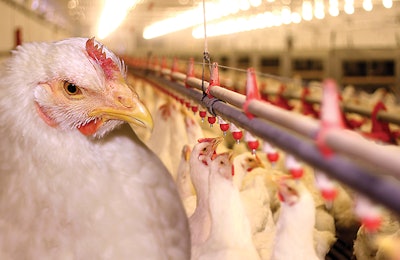
At no time has sanitation been so crucial than during the COVID-19 pandemic. Increases in the frequency of cleaning in production and employee common areas continue to be critical components of industry’s response to COVID-19.
Reduce exposure risk
With increased cleaning comes the need for additional emphasis on safe use and handling of chemicals. These materials bring exposure risks such as inhaling of fumes, inadvertent ingestion and contact with skin. A proper sanitation program helps avoid these exposures.
The use of strong chemicals meant to clean food production areas may be incompatible with common areas like breakrooms, restrooms and offices. Inadvertent mixing of chemicals can potentially produce toxic fumes. For example, mixing bleach and vinegar-based chemicals could produce chlorine gas. Take care to follow the chemical manufacturer's directions every time you use a product. For cleaners, this can include how long to leave it on a surface, if you need to ventilate a room and whether it is harmful if inhaled or ingested.
Sanitation resources
Resources available for businesses and consumers include the U.S. Environmental Protection Agency’s (EPA) List N: Disinfectants for Coronavirus COVID-19. The EPA published this list of more than 500 approved cleaners to kill the COVID-19 virus on surfaces. Each chemical listed has the minimum surface contact time or dwell time to kill the virus.
Some industries and sanitation professionals have instituted accreditation programs like the Global Biorisk Advisory Council (GBAC) STAR program. GBAC, a division of the International Sanitary Supply Association (ISSA), recommends following a strict protocol when responding to a biorisk hazard, such as cleaning and disinfecting for COVID-19. The program is based on quality management system principles utilizing risk assessments, similar to other relevant industry programs like ISO 9001, ISO 14001 and ISO 45001.
Whether your company institutes an accreditation program or not, it is essential to establish a cleaning and disinfection program for your employees and the facility. Training for workers on the correct disinfection techniques and cleaning best practices for biohazard situations is vital, not only at work but also at home. Preparing the workforce and the general public with the knowledge to prepare, respond and recover from outbreaks and pandemics makes all the difference.

















